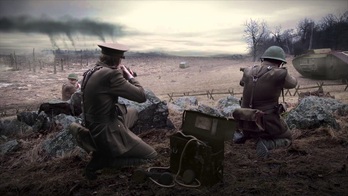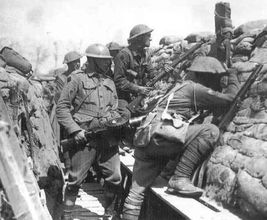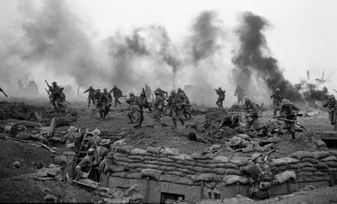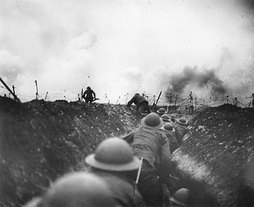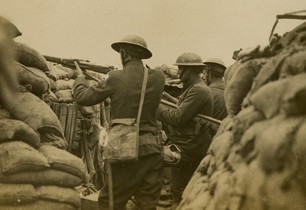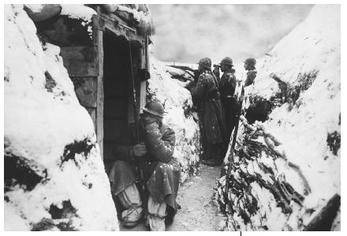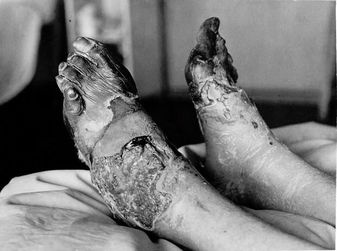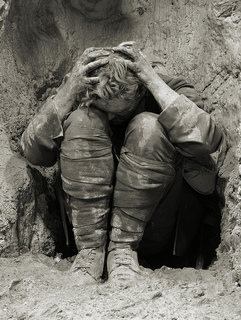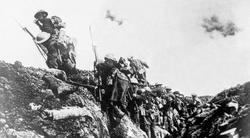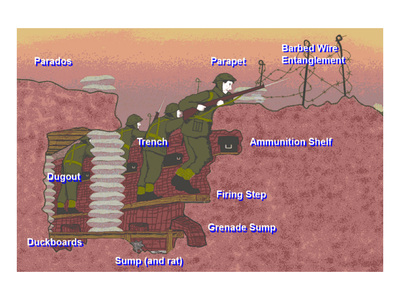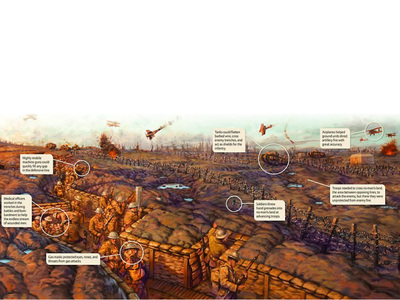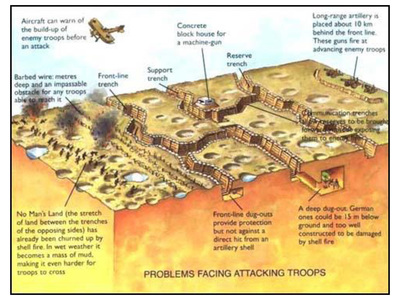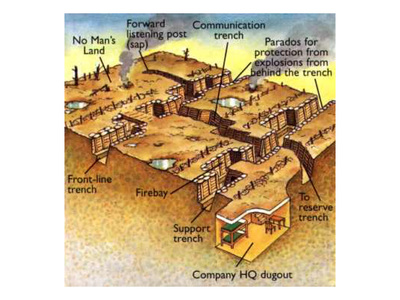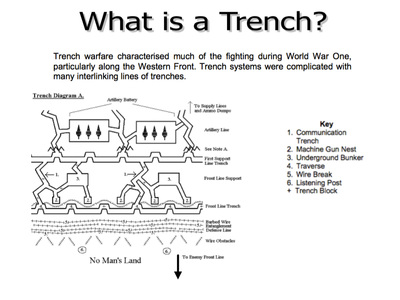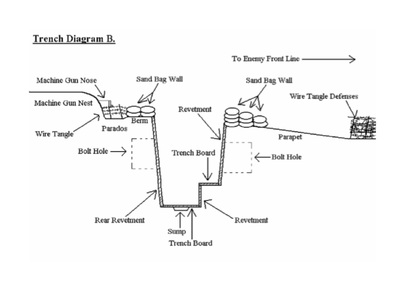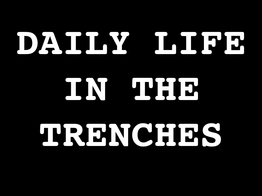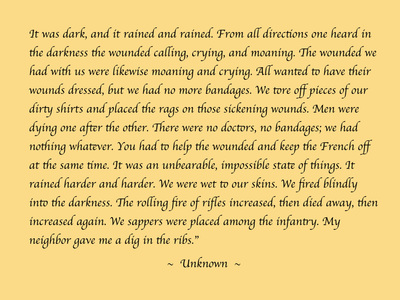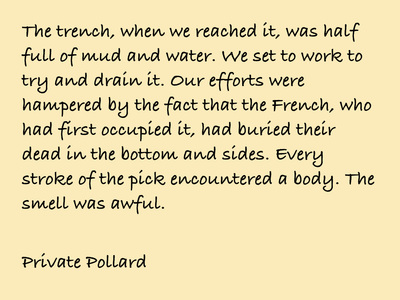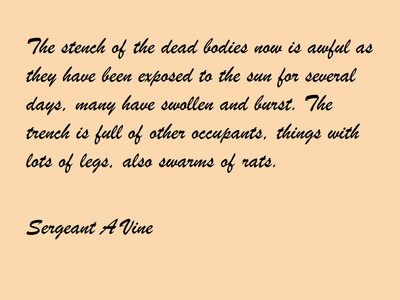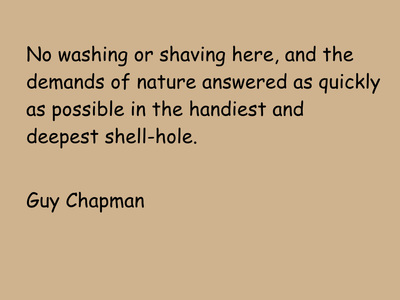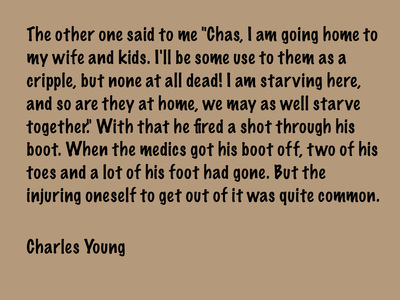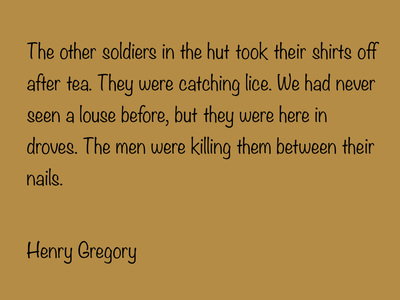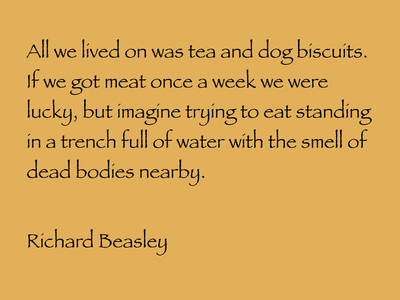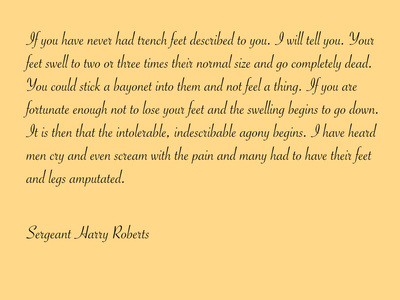LIFE IN THE TRENCHES
READ ABOUT IT!
Welcome to the Life in the Trenches Virtual Center. The first thing your group needs to do is read about Trench Warfare during World War I. After you read, you need to work together to complete the Life in the Trenches Center Page in your Lesson Chronicles.
TRENCH WARFARE
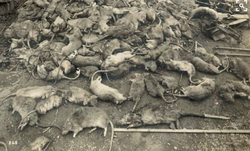
Rats were another big problem for the men in the trenches. The rats were drawn to food in the trenches. These rodents grew as big as cats. The rats would boldly approach sleeping soldiers to steal food right out of their pockets.
ANALYZE IT!
In today's Analyze It Activity, you will investigate life in the trenches during World War I by doing several small activities. Follow the instructions below for each mini-activity.
PART 1: INTERACTIVE TRENCH
First, click on the icon below Interactive Trench Activity. Click on different pictures in the diagram to find out about trench warfare. Then look at the diagrams below. Use the diagrams and what you learned from the interactive to complete the Interactive Trench Activity Section in your Lesson Chronicles.
PART 2: A DAY IN THE LIFE
In this part of the activity, you and a partner will read about daily life for the soldiers in the trenches and work together to complete the - A Day In the Life Activity Section in your Lesson Chronicles. Click on the links below to learn about the daily life of a World War I Soldier!
PART 3: A PICTURE IS WORTH 1000 WORDS
The following are descriptions of life in the trenches told by real World War I soldiers. Read each description with a partner. Using these descriptions, the reading, and everything else you have done in this lesson to create a list of words that describe life in the trenches. When you complete your list, click on the Tagxedo icon below. You will create a word art picture using your list.
Follow the instructions below to create your word art.
1. Click on the Tagxedo icon.
2. Click on Create.
3. Click on Shape - choose a shape
4. Change color scheme by using Theme.
5. Select font type by clicking on Font (the smaller the font and the more the words, the better the shape will fill out.)
6. Enter in words by clicking on Load; type in words that describe life in the trenches in World War I and submit
7. Click on Save/Share/Print, click on Save
8. Save it to your name and homeroom [Ex. (JOHNKENNEDYHOLT)] on your desktop.
9. Airdrop it to me.
1. Click on the Tagxedo icon.
2. Click on Create.
3. Click on Shape - choose a shape
4. Change color scheme by using Theme.
5. Select font type by clicking on Font (the smaller the font and the more the words, the better the shape will fill out.)
6. Enter in words by clicking on Load; type in words that describe life in the trenches in World War I and submit
7. Click on Save/Share/Print, click on Save
8. Save it to your name and homeroom [Ex. (JOHNKENNEDYHOLT)] on your desktop.
9. Airdrop it to me.
EXTENSION ACTIVITY: WWI THEATER
If you finish before everyone else is done, you may plug in your earbuds and watch the following video clips about life in the trenches. You may also watch these anytime you like at home. Remember, all other work must be done before you do the extension activity.
PROVE IT!
You just learned about life in the trenches during World War I. Now you need to show off what you know. Complete the Center Check by clicking on the Center Check Icon below and answering the questions.
CENTER COMPLETE!
You have completed the Life in the Trenches Virtual Center. Click on the button below to go back to the Lesson 3 - America Enters World War I.

